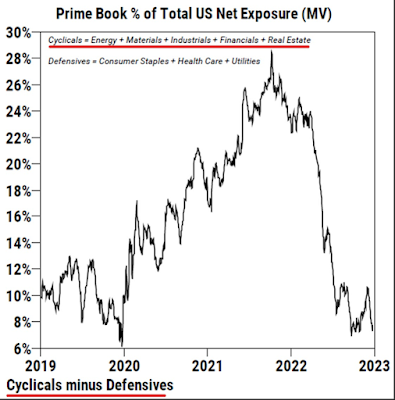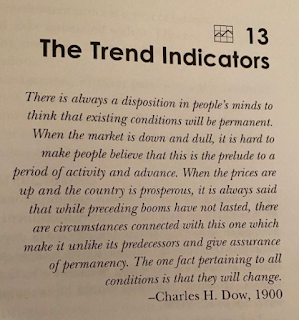When Israeli president Isaac Herzog described the assault on Gaza as a war “to save Western civilization, to save the values of Western civilization,” he wasn’t really lying. He was telling the truth — just maybe not quite in the way that he meant it.
The demolition of Gaza is indeed being perpetrated in defense of western values, and is itself a perfect embodiment of western values. Not the western values they teach you about in school, but the hidden ones they don’t want you to look at. Not the attractive packaging with the advertising slogans on the label, but the product that’s actually inside the box.
For centuries western civilization has depended heavily on war, genocide, theft, colonialism and imperialism, which it has justified using narratives premised on religion, racism and ethnic supremacy — all of which we are seeing play out in the incineration of Gaza today.
What we are seeing in Gaza is a much better representation of what western civilization is really about than all the gibberish about freedom and democracy we learned about in school. A much better representation of western civilization than all the art and literature we’ve been proudly congratulating ourselves on over the centuries. A much better representation of western civilization than the love and compassion we like to pretend our Judeo-Christian values revolve around. ....
And 90% aren’t eating every day.
The US could stop this tomorrow, Israel is a small country completely dependent on America.
The only country really doing anything to help is Yemen. .....
... The Yemeni statement on the US threats (it’s really a US operation, the rest of the nations are there to pretend it’s multinational) is sad, in the sense that this is the only truly moral nation in the world in relation to Palestine..
Muhammad Al-Bukhaiti: Even if America succeeds in mobilizing the entire world, our military operations will not stop unless the genocide in Gaza stops and food, medicine, and fuel are allowed to enter its besieged population, no matter the sacrifices it costs us.
...
........... Throughout my life I’ve had a positive view of Jews and Jewish culture because so many of the people I’ve admired and been influenced by have been Jewish, but other than that it’s not something that I’ve really thought about much. This notion that opposition to the criminality of the Israeli government is driven by a demented hatred of Jewish people is a complete work of fiction. People in our society simply do not feel that way about Jews. Real antisemitism does exist, but it’s a small fringe view. Normal people just want the mass slaughter of children and the ethnic cleansing to stop. .....
Israel will appear triumphant after it finishes its genocidal campaign in Gaza and the West Bank. Backed by the United States, it will achieve its demented goal. Its murderous rampages and genocidal violence will exterminate or ethnically cleanse Palestinians. Its dream of a state exclusively for Jews, with any Palestinians who remain stripped of basic rights, will be realized. It will revel in its blood-soaked victory. It will celebrate its war criminals. Its genocide will be erased from public consciousness and tossed into Israel’s huge black hole of historical amnesia. Those with a conscience in Israel will be silenced and persecuted.
But by the time Israel achieves its decimation of Gaza — Israel is talking about months of warfare — it will have signed its own death sentence. Its facade of civility, its supposed vaunted respect for the rule of law and democracy, its mythical story of the courageous Israeli military and miraculous birth of the Jewish nation, will lie in ash heaps. Israel’s social capital will be spent. It will be revealed as an ugly, repressive, hate-filled apartheid regime ..........
............ Israel is a pariah state. This was publically on display on Dec. 12 when 153 member states at the U.N. General Assembly voted for a ceasefire, with only 10 — including the U.S. and Israel — opposed and 23 abstaining. Israel’s scorched earth campaign in Gaza means there will be no peace. There will be no two state solution. Apartheid and genocide will define Israel. This presages a long, long conflict, one the Jewish State cannot ultimately win.
How the USA is leaving behind not only devastation but hardened enemies, too.
With Israel and the West committing genocide against the Palestinians to ethnically cleanse Gaza, the only outside (de facto) government that has lived up to the elementary demands of the most basic ethics – as well as the UN 1948 UN Genocide Convention and the 1998 Rome Statute – by taking direct military action to confront the perpetrators is that of Yemen. Otherwise, the heroic Palestinian Resistance defenders of Gaza stand alone. ......
That is the dystopian hell world we really live in: Its strongest (for now) states commit and support a genocide and ethnic cleansing war of extermination, proudly announced by the Israeli perpetrators and broadcast in detail for the whole world to watch in real time. Rich-world war tourists, meanwhile, get on planes to get their slice of the mass murder action and post about it on X.
It is left to Yemen, a poor and small country, itself recently ravaged by a brutal war of bombing and starvation, conducted under the leadership of Saudi Arabia and, of course, backed by the West, to do what all of us should be doing: help Palestine and fight Israel. It is an additional irony that the governments that perpetrate the genocide, whether directly or by being complicit, deny recognition to the one government that acts according to international law and intervenes. ........
........... We’ll discuss the multiple fronts ‘Israel’ is fighting on, but first it’s important to remember that ‘Israel’ is a front. ‘Israel’ would collapse in a week without western munitions, they’re just there because Empire wants them there, as a garrison state near the gas station. All of Israel’s allies—the UK, Europe, Australia—are fronts also. They’re just America’s bitches, barking. America itself is a front for what I call White Empire, the continuous regime of colonization that changes capitals and keeps going.
These carbon crusaders are what the ‘Axis of Resistance’ is fighting, and the rebellion has spread in every direction. From the moral center of the Al Aqsa mosque, the Al Aqsa Flood has spread to the north, south, east, and west. Countless long-suffering people have answered the call of the long-suffering people of Palestine (and some notable nations haven’t). We’ve gone over who the Resistance is previously. Now we’ll discuss where they are, and what they’re doing to resist.
This is the Praxis of Resistance. ...........
.................. Now bear in mind that we’re only discussing one war Empire is embroiled in, they’re also getting their ass-kicked in Ukraine, trying to start another war with China, and couping everybody from Haiti to Peru to Pakistan. White Empire — centered in America — has bitten off more than it can chew and is choking to death on its own hubris. Unfortunately a dying empire can still kill lots of people, but mark my words, it’s ending. .....
There is an important and perhaps easily overlooked lesson here. Even those of us awake enough to know that America is a very evil empire, addicted to dominance, militarism, violence, and lying, may sometimes be missing something. The US has such a knack of devastating those societies it targets that it is easy to see nothing else: They make a desert, again and again and again, and they hardly even bother anymore to call it peace, to paraphrase a famous speech ascribed by Tacitus to an anti-Roman resistance leader.
Korea, Vietnam, Laos, Afghanistan, Libya, Iraq,… and the list is far from complete. US power to punish – and if not traumatize and subdue than traumatize and cripple – by laying waste is so overwhelming that it has a stunning effect far beyond its victims. It almost seems as if this empire can only win, because even when it loses, as it does quite often, it still makes an example of those who defied it. Ask in Afghanistan, for instance.
But it is also doing something else: With all its brutality and cruelty, Washington is also constantly enlarging the camp not only of those who hate it, and for very good reasons, but those to whom it has done its worst, whether by lethal economic or even more lethal military warfare – and who nonetheless are still standing. Ansar Allah is a classic example of this. So are Afghanistan, Iran, Venezuela, and, in a much bigger way, actually, even China and Russia.
The USA, in short, is creating, even fostering not only its own worst but toughest enemies: leaderships and whole societies who know exactly how vicious America is, but who have lost their fear. ..........
........ A new year is about to begin. What do we see as we peer across the great divide on our calendars into the other side of midnight, Dec. 31, 2023? As the case of Ukrainian children makes plain, the first thing we see is that we cannot see very well, so thoroughly have our media blurred our vision. “The only thing that can save the world,” Allen Ginsberg remarked in 1973, “is the reclaiming of the awareness of the world.” This seems as true and urgent now as it was 50 years ago. Let us, then, look through the blur to see as best we can. ............
I would say it is the same in the case of Israel except that it is worse. Israel has already lost the war in Gaza—the war that is not, in fact, a war but a murder spree. It will succeed tactically, on the ground, but its strategic defeat is a fait accompli. It is strong language, but I will use it: These months of barbarity, with more to come, mark out Israel as a failed state. It is a chaotic entity that depends on violence toward others for its existence, and the violence depends on an irresponsible sponsor. It is inherently, institutionally discriminatory and adopts the apartheid system from white South Africa. ........
It has been said many times that those without a past have no future. Or that without a past one is marooned in an eternal present with no prospect other than repetition of the what is, as I call it. There is the famous line from Kundera’s The Book of Laughter and Forgetting, quoted so often it is cliché, but there seems no avoiding it given its merciless pertinence to our condition: “The struggle of man against power is the struggle of memory against forgetting.” ........
































